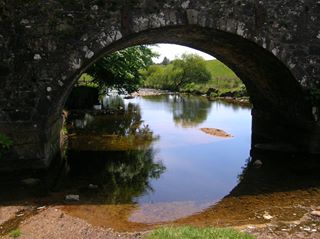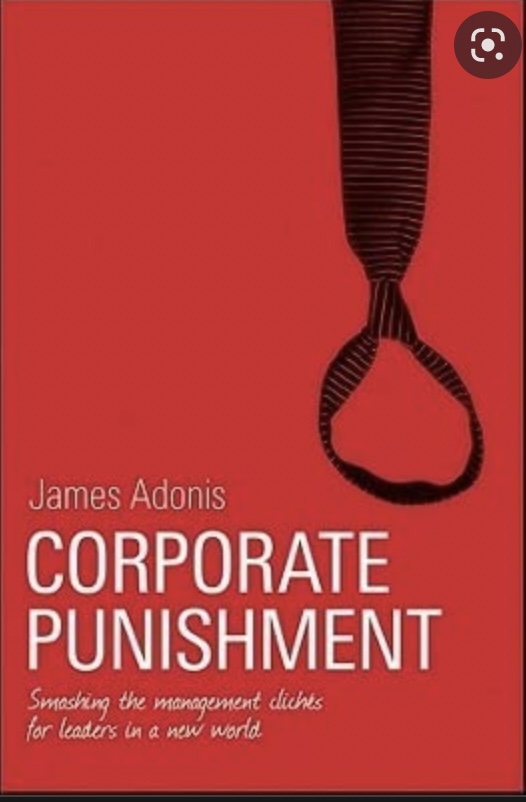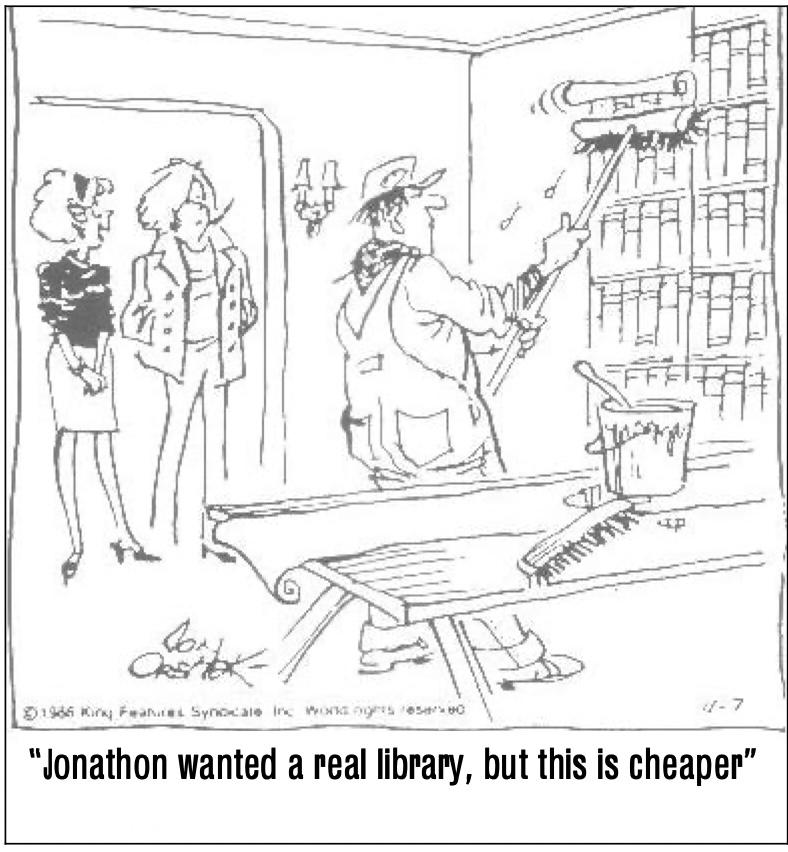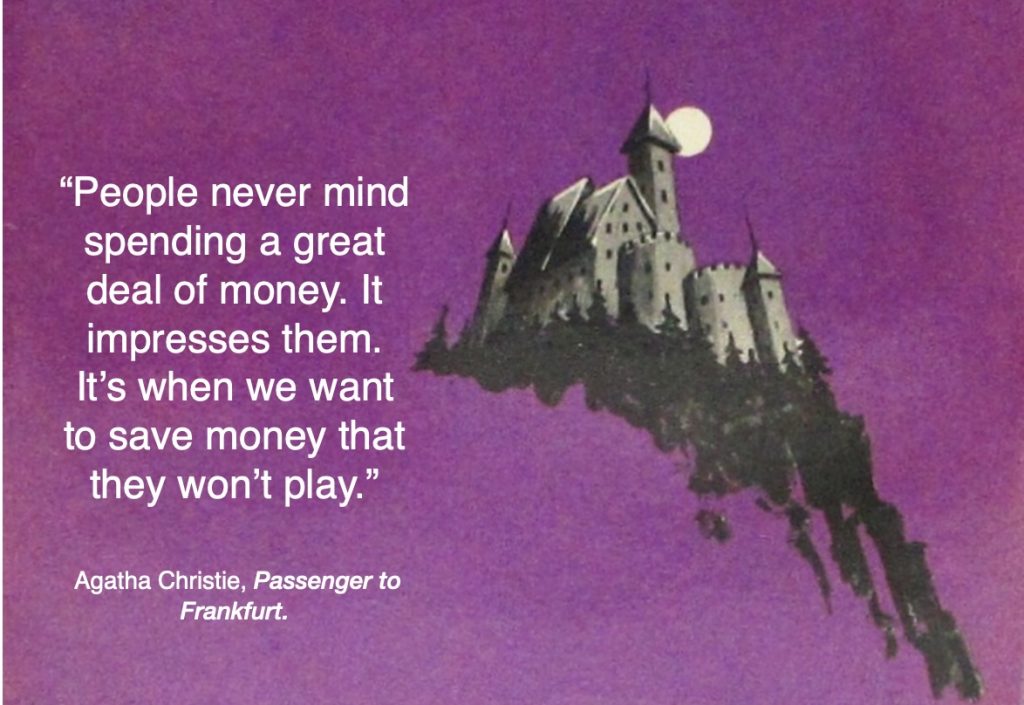
With the beginning of a new year, most of us are thinking about what we plan to do in 2023 – we consider our aims, objectives, goals and targets.
I am reminded of a conversation, some years ago, between Françoise Szigeti, who was then Vice President, International Centre for Facilities, Ottawa, Canada and Helen Tippett, then Emeritus Professor, Faculty of Science, Victoria University, New Zealand.
Françoise observed that the same words tended to be used to convey totally different meanings, and Helen came up with the following that she uses to help her students keep the meanings straight.
- “You AIM for the stars.
- Your OBJECTIVE is to land on the moon.
- Your GOAL is to build a rocket with enough fuel to get you there at an affordable cost.
- Your TARGET is be ready to launch in two years.”
Got It?

Photo 247485510 / Asteroid Hitting Earth © Elen33 | Dreamstime.com
Don’t Look Up – as opposed to Now, or Back in Anger – is a 2022 witty parable on the climate crisis in which a variety of movie stars play more or less against type. It does not say much about infrastructure, except to destroy it all with an asteroid, but I was struck by the stupid economics.
When the Elon Musk-alike (Mark Rylance!) says how many trillions of dollars’ worth of rare and valuable metals are contained in the asteroid, one of the heroes mutters about how that isn’t going to mean anything when it destroys the Earth.
But I was struck by the very specificity of the pricing. As though price is an absolute, unaffected by destruction, or anything to do with other humans. Even without total destruction, surely living through the threat and even partial environmental chaos might change people’s enthusiasm, one way or another, for buying yet more mobile phones?
The Musk-alike means how many dollars he could get for the stuff in today’s market, not the value; it’s left to someone else, a corrupted government advisor, to suggest it’s enough money to cure hunger and poverty, but you know he’s just mouthing it. (And you can’t eat money.)
The trillionaire simply plans to be trillions richer. He has no sense of who will be around to buy from him. The ‘stuff’ is enough.
The dollars have some kind of fabulous independent existence.
Rather like the idea of how many dollars infrastructure construction generates. We know for sure lots of construction means lots of money for construction companies, but the value it creates is rather less easy to work out.
Both of these things – the $ worth of metals in an asteroid that probably can’t be used, the $ worth of building infrastructure any old place – are, I think, what some people call fetishes. Inanimate objects worshipped for supposed magical properties.
Out of context, we’re not even trying to work out what’s actually of value. It really is very stupid economics.
PS I recommend the film

The peculiar antics of Elon Musk in late 2022 prompts, once more, the question of whether tech billionaires are really the best model for our heroes.
During Covid, plenty of people realised how dependent we are on carers, paid perhaps a millionth of what Musk pays himself. We clapped for a very different kind of heroics during lockdown.
Infrastructure is an intriguing mixture: it’s technology to keep our societies going, not primarily to make money. Managing it well involves caring for stuff. We are not carers in the traditional sense – and many of us are paid better than nurses or teachers.
Of course, technology innovation and looking after other people are very heavily gendered in our society: stereotypically, techies are male, carers are female. Making an obscene amount of money from exploiting innovation is masculine heroics; working till you drop caring for someone else is feminine heroics. (There are plenty of men in caring professions, but that doesn’t stop the stereotype.)
Sometimes I feel we’re trying to work out what kind of heroes we want to be in asset management. There are plenty who fancy the innovation techie route, getting all excited about ‘digital transformation’ (cf. the call this week for papers by ReliabilityWeb on the subject, for example) and, probably, the well-founded belief this is an easier way to make money. There are others, more equitably spread between women and men, who are sure it’s mostly about people.
We shouldn’t be particularly surprised to see crude stereotypes echoed in our own profession. A colleague recently described the problem of dominance in AM by “fat middle aged white men” (he said he was talking about himself, and the fat bit was a joke) – a dominance that doesn’t thrill me. I find myself more alarmed by the failure to learn our own lessons about what it takes to manage infrastructure, and rush into anything techie. As though, this time, technology innovation will sort out all the problems. Including the tiresome need to think about people.
But, then again, it’s surely the mix, the dynamic tension, between technology and caring which actually appeals to many of us; that brought us into asset management in the first place.
In their excellent book The Innovation Delusion, Lee Vinsel and Andy Russell challenge both innovation and heroes as ideals – and propose instead the maintenance mindset and how to sustain our “human-built world”. I think this is partly what they mean, this interesting mix.
PS Their Maintainers are still going strong, by the way, with some assistance from the Alfred P. Sloan Foundation and the Siegel Family Endowment – see www.themaintainers.org

We have to be more efficient, do more with less! Why?
It has been of increasing concern to me that we seem to be focussing on efficiency without having the right steps in place for effectiveness. Why, I asked myself was this happening? The answer I came up with – which you may not agree with – is that it is relatively easy if you are the Commonwealth or State Government or a Head Office, to focus on policies that impose efficiency on others. Effectiveness, however, requires each of us to make changes of our own – much harder!
Thinking along these lines I issued a challenge to the asset managers taking part in the History Forum at the time, I asked “ Is Asset Management still fun? Or has our concern for efficiency (doing the same with fewer resources) driven out our interest in effectiveness (doing better by doing differently)?
I was thinking of effectiveness as getting the right assets in place, in other words, capital optimisation (which I still think we do rather badly) rather than maintenance optimisation (which I think we do rather well). But John Hardwick saw another aspect to effectiveness. He saw the necessity to get the right culture and information infrastructure in place. Both logically pre-date a focus on efficiency. Here is John’s comment, which is worth thinking about.
“Well, I can’t miss the opportunity to comment on this one. I don’t know how you pick your topics but this one is great. I think the doing more with less can only really become successful if you have already put the building blocks in place, set up the right culture and created the IT systems to gather the information for decision making. This creates the effective part of the story but how do you then deal with efficiency? Well, for me there are two options. One you can take on more risk. At least if your Asset Management is working you can articulate the change in risk. The other option is to look at your people and process to understand if this is optimum. What interested me the most with this topic Penny is you must be in sync with our company. I have just been moved from the strategic area of our company to managing about 700 people delivering outcomes. Interestingly i am still the business process owner for Asset Management. I am sure there are going to be some real challenges in this move. The funny part is this means I am more excited then ever. New challenges, new people to influence, more people to become part of the Asset Management community if i get it right. If it does not excite you then get out of the field and do something else.”
Amen!
Your thoughts?
Do you know where are good examples that illustrate improvements in AM effectiveness (either capital optimisation or organisational culture)?

Today the pressure is on to measure and track our performance with KPIs, but it is important that we measure the right things. The following story is from 30 years ago but the message still applies.
I had only just joined the water agency in South Australia as a policy analyst, when a complete stranger turned up, not at my office but at my home, and presented me with a dirty scrap of t-shirt material. “There!”, he said angrily, “that’s what happens when I put that under my tap. What are you going to do about it?” I was mystified how he knew where I worked, and even more mystified about what I was expected to do.
A month later there he was again, with another piece of muddy t-shirt. This time I decided to find out from our water quality section just what was going on. It turned out that as most of our water comes from the River Murray and we are at the tail end of the river, there was a great deal of sediment that was carried along with the water. The practice at that time was to thoroughly flush out the pipes once a month to keep the water at a good quality. After flushing, the water was relatively clear and free of sediment, but for those few hours the water flowed like gravy!
Now, the authority’s water statistics told the engineers that they provided relatively clear water 99.5% of the time, which was held to be a pretty good service. But anyone who put through a load of white washing at the time of the flushing probably thought it an exceedingly poor service. Who was right?
After speaking with the water quality team about my visits from the t-shirt man, they decided that it would be a good thing to at least let people know about the flushing program and when it was going to take place so that they could avoid using the taps at that time.
Later, they were able to find ways of avoiding the flushing problems and still provide a reasonably good quality of water.
But neither of these two actions were taken until the water quality team started thinking about the problem from the perspective of the user! The KPI’s told them they were doing a good job.
Your thoughts and experience? Are your KPIs giving you the right information?

I’ve long been fascinated by the idea that we need ‘bridges’: people who can translate between two domains with different mindsets.
One key gap to bridge is between science and management, as Penny describes https://talkinginfrastructure.com/2022/07/20/science-and-asset-management/ . There are other gaps that affect us in asset decision-making.
In the late 1990s two of us, now very senior IT director Christine Ashton and me, put forward the need for such active translation between IT and business users. IT has always struggled to understand what’s really needed by users, as the users themselves are poor at describing their information and information processing requirements.
Christine and I set up a special interest group in the British Computer Society – an organisation which could do with some translation in the first place – for people who work between IT and business. We had a great time discovering some very good people, who, I am happy to say, generally earned pretty good remuneration for their ability to understand what the users need and turn it into something IT techies could understand (and use). It’s still a rare and precious ability.
And it’s surely still as big a challenge as ever.
Add to that how to bridge between an engineering mindset and business. I train engineers who still radiate – why do I care what the objectives of the organisation are? My job is to do the right thing by the asset, regardless of management.
It’s fascinating in all three cases, because scientists, just like engineers and IT in their different ways, are kinda proud of their ability not to compromise with business and organisational realities.
In particular, the issue of ’embracing’ uncertainty is just so relevant to Asset Management. But we educate scientists, engineers and IT to hanker after 10 decimal places of clarity.
And, I fear, not to ask ‘so what? – or, what happens next?’ as often as they should.

“We donʼt get the recognition we deserve” the council’s maintenance guy told me. “Nobody ever says, ‘Thanks!’”
But why would they when you have just told them your organisation has an insurmountable renewal gap in its road assets?”
We have to wonder if presenting problems without solutions is really what asset management is about. What if a brain surgeon told you that you have a brain tumour but nothing could be done about it, would you say ʻthanksʼ? Or would you be inclined to downgrade his expertise, seek a second opinion and/or wallow in the misery of the diagnosis? If so, why should councils be any different?
If, however, your brain surgeon said: ʻYou have a brain tumour, it is tricky, but we can operate and there is an excellent chance that, if you follow the regime that I will give you, you will recover well.ʼ Would you now say a heartfelt ʻThanks!!’ Indeed you would. Again, why should councils be any different?
We now have models that enable easy prediction of future asset renewal. It really is ʻplug and playʼ, we put in the raw data and, hey presto, out come the answers. These projected asset renewal costs will generally be far above the capacity of the organisation to finance, so we cannot stop there. Providing this ʻraw dataʼ is NOT the end of the Asset Management task, merely a preliminary data input.
A Solution?
Suppose now that you say to your council. “This is the current state of the asset renewal gap. The figures represent the cost of continuing to do things the way we have always done them in the past. This problem has built up over many years and it will take a number of years to correct, but with your support and using the asset management tools and knowledge we now have, we can reduce this gap to manageable levels.
As a bonus, what if, at the end of the year, you are able to recalculate the gap and demonstrate that you have made, say, a 10% or 20% reduction, and that, with actions already in hand, you are on track to reduce the gap even further in the following year, do you think that they will now say: “THANKS!”? Of course. You have now done something worth thanking.
Asset Management is not about presenting problems – it is about addressing them.
This was ten years ago. Where are we today?

Yes, it may be frantic now as we try to finish up all those things we promised we would have done ‘by the end of the year’, but soon it will be Christmas and, hopefully, we can relax and catch up on reading more, as we also promised ourselves, but didn’t get done.
If this sounds like you, may I recommend a book that will have you laughing as well as learning? In “Corporate Punishment”, James Adonis, takes apart 38 of the most common – and most annoying – business clichés, such as ’employees are our greatest asset’, ‘think outside the box’, ‘pick the low hanging fruit’, and the ever-present but abysmally misleading ‘what gets measured, gets done’. At the very least, you will avoid the embarrassment of using them yourself.
The cleverness of the cover illustration encouraged me to pick this up and start reading and after that, the author kept me going until the very last page. I don’t know about you, but it is the rare book I read right through to the end nowadays, so this is a rare recommendation.
AM Clichés?
Reading these general business clichés reminded me that we have our own in asset management – perhaps the leading one being ‘there are no votes in maintenance’. If there were a book of AM Clichés, what clichés would you suggest should be included?

By 1989, state finances were getting tight across the entire country. But none was in a worse condition than Tasmania which had always been a mendicant state, even in the best of times.
I had been invited to speak to the Tasmanian Municipal Government in May on the subject of priority setting on which I had spoken to the Infrastructure Forum the previous year. But that earlier paper was aimed at giving a message to the AFCC, my arch nemesis at the time for their interest – and more especially, their ability – to be funded for infrastructure without any obvious concern for community benefit. I could see that local government required a different story.
In Hobart that morning, the session had been completely concerned with road funding, which they decided could be solved only if the Commonwealth Government would give them more money. I said that while we could fix some problems with more money, we didn’t have enough to fix all problems that way. In those days, I was younger and braver and I told them that they needed to reckon with the fact that there was no more money money coming, that indeed, whatever money the Commonwealth had to give would be reached by those ‘with longer arms than theirs’. Their experience meant they did not doubt me. But, I said, there was an answer: they could spend what they had more wisely. I then explained what they could achieve with asset management.
Happily the paper was well received. I was even asked to give the same paper to the engineers’ conference the following day. And then, about a month or so later, I had an invitation from the Minister of Construction, Resources and Energy, who had been sent a copy of my paper. He could see the value of AM and asked me if I would ‘come down to Tasmania and help him run the show’ . Chapter 12 “Moving on – my story” tells of this incredible opportunity and part 4 of our continuing story will look at how it worked in Tasmania.

Is this the AM curse? Every election year we are presented with some impossibly expensive infrastructure project which generates great excitement – and acceptance. Invariably these projects are unaccompanied by any detailed analysis, for it is the idea itself that is so compelling, and so analysis just spoils it.
Is this the problem with AM? Are we trying to sell the detail, when all that is wanted – indeed all that can be absorbed by the general public – is the vision? This is not to say that detail is not needed but without an exciting vision, why will people listen?
I am looking for examples of good AM ‘visions’. Do you have, or know of, one?

Recent Comments